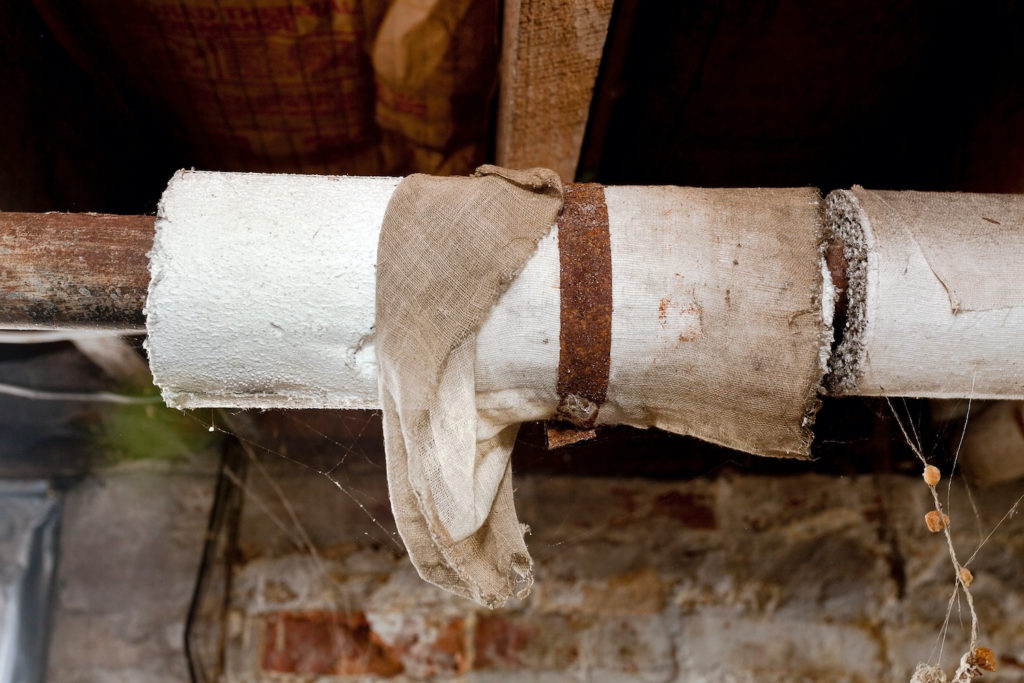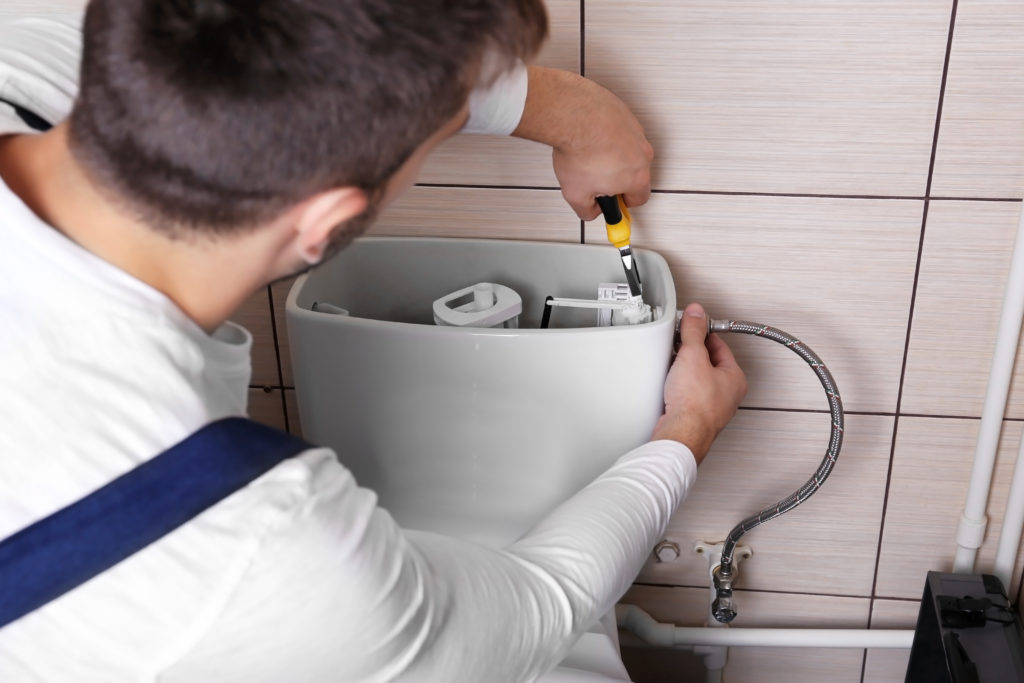Are you worried your home has asbestos pipe insulation?
If you live in a home built before 1980, there’s a chance your piping is wrapped in asbestos insulation. Asbestos (specifically, chrysotile or white asbestos) was used in pipe insulation and pipe wrap worldwide from 1900 to the 1970s. It was used to retain heat in hot water and heating systems and to avoid condensation on cold water piping.
While asbestos is flame-resistant and decent insulator, inhaling asbestos fibers can be incredibly harmful to the human body. It is vital for homeowners, property managers, and prospective buyers to be aware of what to look for when it comes to asbestos pipe insulation. If asbestos is identified, it must be sealed off properly as soon as possible.
Why Is Asbestos Dangerous?
Asbestos started to be commonly used in industrial settings, but the dangerous health effects weren’t known at first. When a rise in lung cancer diagnoses occurred in workers who assembled or installed asbestos-containing products, companies began to be clued into the toxic nature of asbestos.
However, many companies kept the information secret and continued to manufacture asbestos-containing products because of the low cost and convenience. It wasn’t until the 1960s that exposure to asbestos was publicly associated with health problems. Manufacturers continued to resist, so it wasn’t until 1978 that asbestos was eliminated from new home building materials.

The Sole Cause of Mesothelioma Cancer
Asbestos exposure is sneaky. Breathing in the dust and fibers of asbestos materials is linked to asbestosis, an often-fatal scarring of the lung tissue. Asbestos exposure is also thought to be the singular cause of mesothelioma cancer. Mesothelioma is aggressive and unfortunately, always fatal.
Scientific researchers have concluded that these diseases develop from inhaling the microscopic fibers of asbestos. Since these fibers are so durable, they can remain in the lungs for many years. Typically, people with asbestos exposure will not experience any symptoms until many years after the exposure.

How to Tell if You have Asbestos Pipe Insulation
Certain occupations are at a high risk of asbestos exposure due to outdated infrastructure, such as:
- Industrial and power plant workers
- Construction workers
- Shipyard workers
- Firefighters
- Machinists
- Miners
- Oil refinery workers
However, asbestos can be found in everyday homes around the world. One of the most common places to find asbestos in a home is in the white-colored, cloth-like wrapping around pipes or ductwork in the attic or basement. It was very popular between the 1950s and 1970s since it offered heat and cold preservation and prevented condensation on piping.
If you live or are looking to buy a home built before 1980, it is essential to check for the presence of asbestos insulation so that you aren’t exposed to serious health risks.
Identifying qualities of asbestos pipe insulation:
- A white-gray colored material that looks like corrugated paper is wrapped around pipes
- Used as a paste or plaster on valves, elbows, and other parts of the pipe that were difficult to wrap
- The wrapped insulation often looks to have multiple layers with a honeycomb design and fluffy texture
- Typically found in less visible parts of the home such as attics, basements, crawl spaces, ceilings, floor tiles, and closets
Sometimes, fiberglass insulation can resemble asbestos pipe insulation. If you are not sure, it is best to work with a professional to learn what you’re dealing with so you don’t accidentally expose yourself to asbestos.

What Should I Do if I Identify Asbestos Pipe Insulation?
If you have a suspicion about the presence of asbestos in your home, never handle the situation by yourself. Any and all contact with asbestos-containing materials must be handled by a trained professional asbestos abatement specialist.
Even though asbestos-containing products are actually relatively safe if left undisturbed, they can become brittle and crack over time, causing the particles to release into the air.
Do-it-yourself (DIY) home projects have greatly increased the possibility of asbestos exposure in homes built before 1980 by disturbing the fibers through sawing, drilling, and sanding. For this reason, avoid DIY plumbing projects and always trust an experienced professional plumber to work on your pipes.
Asbestos Abatement Methods
If a professional identifies asbestos in your home, you have a few options. The three most common ways to extinguish the risk of asbestos are:
- Encapsulation
- Sealing off
- Total abatement

Encapsulation
Encapsulation is a very common and affordable way to reduce the risk of asbestos exposure. Encapsulation can be accomplished either with a paint-like material that gets coated over the asbestos materials or a self-setting cement tape that hardens like a cast.
Encapsulation also prevents the disruption of asbestos fibers if you ever decide to fully remove the pipes. However, even though encapsulation is very effective, there is still a risk of disrupting the fibers if it is bumped by a heavy object.
Sealing Off
Another way to stay protected from asbestos exposure is to seal off the area. You can have a drywall or metal “box” built around the pipes to prevent anyone from coming in contact with the piping.
Total Abatement
If the potential for exposure is severe, your best bet is to opt for a total removal (abatement). Asbestos abatement professionals will take extremely strict protocols to fully remove all asbestos-containing materials. These protocols include:
- Turning off HVAC units and sealing vents so asbestos fibers don’t circulate
- Sealing off the work area with plastic sheeting
- Using wet cleanup tools and HEPA filter vacuums to clean up
- Placing all materials getting removed into clearly identified leak-tight containers
- Wearing a full-face mask respirator and coveralls
- Properly disposing of asbestos-containing materials according to state and federal regulations
Never Tamper With Pipes in Your Home
If you live, manage, or are looking to buy a property built before 1980, always have a professional asbestos abatement specialist take a look at your piping insulation to confirm or deny the presence of asbestos. Being tempted by a DIY plumbing project can have detrimental health effects down the line, so always hire a professional plumber to fix your piping and ductwork.
Whether you need a simple fix or want to completely redo the piping system in your home, you can trust AJ Alberts Plumbing for the job. Contact us today to set up an appointment!







